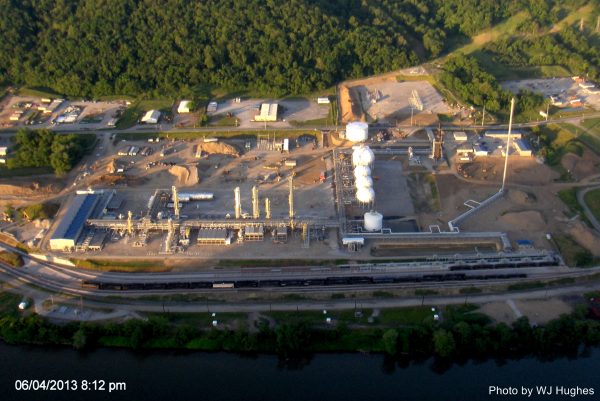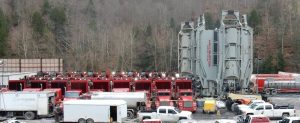
If the proposed Appalachian Gas Storage Hub comes to pass, our region would become a major petrochemical region, another Cancer Alley. We’d sacrifice even more of Appalachia’s people, land, air, and water to the greed pf fossil fuel corporations. Let’s create a renewable future for our region instead!
Read Part 2 here. Read Part 3 here. Read Part 4 here. Read Part 5 here.
Related content: Renew WV and Robin Blakeman, Vivian Stockman: Gas storage hub a field of nightmares
Planned Chemical Monstrosity Would Bring Skyrocketing Climate Emissions, Public Health Dangers
The nation’s largest petrochemical hub is located in southern Louisiana along the Mississippi River. This area is known as Cancer Alley, because its neighbors suffer very high illness rates.
This Gulf Coast region is increasingly beset with hurricanes, floods and other storms which endanger the reliability of chemical production there. Meanwhile, there’s been a recent increase in Gulf Coast export markets for natural gas liquids and the chemicals derived from them. So, industry and government are now planning to create a second major petrochemical region here in our Appalachian Ohio River Valley.
New petrochemical growth is also still planned for Louisiana. It seems that the biggest expected growth in U.S. oil fracking is in the Permian Shale, in Texas and Oklahoma; the oil and gas coming from there will go to Gulf Coast petrochemical areas.
But the biggest increase in fracking for natural gas (methane) and natural gas liquids is projected to come from Appalachia. According to March 3, 2017 Shale Daily article, “The Appalachian Basin’s shale formations helped to birth the natural gas renaissance in North America, and the region now is poised to join the Gulf Coast as a major petrochemical hub.”
Central to these plans is the establishment of an Appalachian Storage Hub which would consist of underground storage facilities for natural gas liquids extracted from the Marcellus, Utica and Rogersville shales across West Virginia, Kentucky, Ohio, and Pennsylvania, as well as a vast network of new pipelines.
Petrochemicals have been stored underground for a long time, but not without some serious problems. For example, a salt deposit dug out for multiple underground storage caves for natural gas liquids and other chemicals became the site of a catastrophe that destroyed most of a small town in Louisiana in 2012. A drill bit pierced the side of one chemical storage cavern. Toxic chemicals oozed up and most of an entire community was forced to move out.
We also remember a more recent huge and long-lasting problem with leaking underground petrochemical storage in southern California.
As part of the Appalachian Storage Hub, one hundred million barrels of natural gas liquids would be stored in a to-be-built system of “underground caverns, salt caves and areas where natural gas has been extracted,” according to a January 23 Kallanish Energy article.
The Hub would transport natural gas liquids and their constituent chemicals by means of six big pipelines running 386 miles along the Ohio River from Monaca, PA to Catlettsburg, KY, right though the Huntington, WV area. Unless the plan is to blow up steep hills, there is nowhere these six mammoth pipelines could run other than virtually adjacent to the banks of the Ohio River, the source of drinking water for millions of people.
Monaca PA is where Royal Dutch Shell wants to build a multi-billion-dollar ethane cracker plant; Catlettsburg KY is where Marathon Petroleum has a refinery. A major expansion of Marathon Petroleum’s refinery is now underway. A 68-mile Hub pipeline spur would also go from Point Pleasant, WV to Charleston, WV. Also planned is an additional three thousand miles of smaller pipelines to transport chemicals to current and future industrial plants along a 454-mile corridor in the four states.
Read Part 2 here.
Want to join OVEC’s efforts on the issue of the proposed Appalachian Storage Hub? Contact us at info@ohvec.org or 304-522-0246.











We need the storage hub!!!!
My opinion is NO. I’m in the health field and the less health problems our Valley ensures the better.
Keep our residents safe